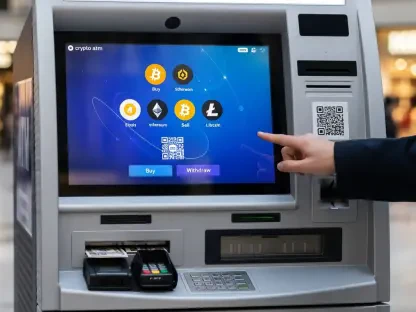As the retail industry stands on the verge of profound changes, the persistent drive for innovation, the quest to navigate challenges, and evolving consumer behaviors are set to reshape the landscape in 2025. This transformative period shifts from mere operational adjustments to the implementation of comprehensive strategies that align with emerging economic policies, technological advancements, and a renewed focus on customer experience. These elements collectively promise to redefine store operations, market strategies, and the overall dynamics within the sector.
An Uncertain Outlook for Distressed Retail
The future trajectory of distressed retail, especially within the home, apparel, and discretionary segments, remains fraught with uncertainty. This ambiguity grows as the United States prepares to embrace a new presidential administration that plans to introduce fresh economic policies, impacting the retail environment. Mid-sized retailers that cater to middle-income consumers with basic, lower-end discretionary merchandise are projected to encounter heightened financial distress unless they engage in strategic innovations. Without compelling value propositions, these retailers risk becoming obsolete and disappearing from the market landscape without much notice.
Recent data from 2024 underscores the instability within the retail sector, with nearly 20 retailers filing for bankruptcy. Notable examples include Express, which was absorbed by a joint venture involving WHP Global and key mall owners such as Simon, Brookfield, and Centennial. Similarly, Conn’s Inc. ceased operations, closing all its Conn’s Home Plus and Badcock Home Furniture & More stores. Big Lots also faced severe financial issues, leading to a Chapter 11 filing and an eventual sales agreement with Gordon Brothers Retail Partners, enabling Variety Wholesalers to acquire a substantial portion of its locations. These cases highlight the pressure on retailers to re-evaluate their market strategies and operational methods to stay afloat.
Direct-to-consumer (DTC) brands, which had shown significant growth before the pandemic, faced notable upheavals as they reached growth ceilings amid rising online order fulfillment costs. Simeon Siegel, Managing Director at BMO Capital Markets, remarked on the diminishing trend of companies defining themselves solely by their selling channels rather than focusing on product quality. This shift suggests a new era where brands need to prioritize the intrinsic value of their products and develop effective consumer engagement strategies to navigate the competitive landscape effectively.
Deal Making Efforts Likely to Continue
Merger and acquisition (M&A) activity within the retail sector was substantial last year and shows signs of continuing this trend. Among notable deals were Carpenter Co.’s acquisition of Casper Sleep and HBC enhancing their portfolio by adding Neiman Marcus. Despite the flurry of transactions, regulatory hurdles, primarily from the Federal Trade Commission (FTC), hindered some significant deals, such as Tapestry’s attempt to acquire Capri and Tempur Sealy’s bid for Mattress Firm. With the new presidential administration and potential changes in FTC leadership, uncertainties remain surrounding the dynamics of deal-making in 2025.
Projections indicate a 10% increase in overall M&A activity, following a 13% rise in 2024. Private equity transactions are slated to grow by 16%, while corporate deals are expected to increase by 8%. Goldman Sachs also anticipates a similar rise in deal activities for 2025, despite ongoing electoral uncertainties causing market volatility. This forecast highlights sustained investor interest and a strategic push for consolidation efforts within the industry, emphasizing the need for strategic foresight and adaptive planning within the retail sector.
Uncertainty Around Diversity, Equity, and Inclusion (DEI)
Diversity, Equity, and Inclusion (DEI) in retail faced significant turbulence, primarily due to backlash from social media platforms. Prominent companies such as Tractor Supply, Lowe’s, and Harley Davidson retreated from previously upheld diversity practices, driven by a rising wave of skepticism. Walmart’s decision to terminate several of its diversity-related initiatives epitomized this sentiment, despite the retailer’s substantial historical commitment to diversity efforts.
Critics argue that abandoning DEI policies poses a risk of myopic decision-making that may alienate younger, more diverse, and open-minded consumers. Nonetheless, some major companies persisted in upholding DEI principles, albeit with less public fanfare. For instance, Costco explicitly defended its diversity strategies against shareholder opposition. The broader consensus suggests that maintaining DEI programs, albeit under new terminologies or with less publicity, is essential for fostering an inclusive and dynamic corporate environment. This shift underscores the complex balance retailers need to strike between public perception and genuine inclusivity initiatives.
Tariffs and the Ongoing Consumer Value Search
Inflation persists, and consumer behavior increasingly leans towards maximizing value. Bankrate reports a startling 22% rise in prices since the pandemic-induced recession, emphasizing consumers’ need to stretch their budgets more effectively. As Walmart’s CFO, John David Rainey highlighted, there is a dual demand for value and convenience. Dollar Tree’s interim CEO, Michael Creedon, noted that consumers’ restricted budgets are prioritizing essential needs over discretionary spending, reflecting a broader trend within the retail sector.
The incoming administration’s potential implementation of tariffs, particularly on imports from China, Mexico, and Canada, raises valid concerns about retail costs and operational impacts. Retailers like Best Buy and The Home Depot have developed mitigating strategies against such tariff shocks, positioning themselves better to handle these economic shifts. However, other retailers, such as Lowe’s, face significant exposure due to substantial sourcing from abroad. Conversely, off-price retailers, relying predominantly on domestic sourcing methods, may navigate these tariff challenges more adeptly. This scenario underscores the varied tariff vulnerabilities across the retail spectrum and the need for adaptive strategies.
Shrinkage and Crime Insights Remain Elusive
Retail’s ongoing struggle with shrinkage and crime remains enveloped in ambiguity. The National Retail Federation’s decision to cease its annual shrink report, coupled with the retraction of key statistics from organized retail crime, leaves the industry with limited current data on these critical issues. Despite previously available reports highlighting theft concerns, 2024 witnessed scant new insights concerning inventory losses, creating challenges for retailers aiming to curb these issues effectively.
Retailers’ continued experimentation to address shrinkage, such as Dollar General’s reversal on self-checkouts and Walmart’s merchandise lock-up tactics, highlights the complexity of balancing theft prevention with customer convenience. These measures, while aimed at reducing shrinkage rates, often inadvertently impact customer experience, making it clear that finding comprehensive solutions to shrinkage and crime remains an intricate and ongoing challenge for the retail industry.
Declining Relevance of DTC Brands
The once-glorified direct-to-consumer (DTC) brand model appears to be losing its shine. While DTC channels continue to hold significance, brands are now shifting towards a more balanced approach, integrating multiple sales channels to optimize their reach. Companies like Nike, which formerly prioritized DTC channels, are now re-emphasizing wholesale partnerships as a means of achieving operational normalization. This pivot arises from a clear need for profitable growth within a challenging funding environment, necessitating a re-evaluation of sales strategies.
Prominent DTC brands are undergoing significant transformations to ensure long-term sustainability. Changes in ownership, strategic alterations including store closures, and the adoption of new distribution methods illustrate this evolution. For example, Outdoor Voices and Casper have seen notable ownership changes, reflecting the broader trend towards redefining their retail strategies beyond a purely DTC-centric identity. This paradigm shift suggests that while DTC channels remain crucial, a balanced and diversified approach is imperative for brands to thrive in the evolving retail landscape.
Department Stores’ Evolution for Survival
In a challenging 2024, department stores have demonstrated their ability to adapt and evolve. Macy’s, for instance, accelerated its store closure plans as part of its wider strategic realignment efforts. Meanwhile, J.C. Penney is exploring new store openings, signaling a potential shift in its operational strategy. J.C. Penney’s newfound profitability and promising outcomes at Macy’s “go-forward” locations deliver an optimistic outlook for the resurgence of department stores.
Strategic realignments, especially concerning real estate assets, have been propelled by activist investors, further complicating the department store landscape. Macy’s and Kohl’s have both contended with such pressures, highlighting an ongoing trend where investor-driven transformations play a pivotal role in shaping the future of department stores. These strategies, aimed at unlocking value and improving operational efficiency, underscore the evolving nature of department store operations in 2025.
Evolving Customer Experience
The retail industry is on the brink of significant changes, driven by continuous innovation, challenges, and evolving consumer behavior, all expected to reshape the landscape by 2025. This period of transformation goes beyond simple operational tweaks, shifting towards comprehensive strategies that align with new economic policies, technological advancements, and an increased emphasis on customer experience.
Economic policies will play a huge role in this new era, guiding both large chains and small businesses towards sustainable practices and diversified offerings. Technological advancements such as AI, machine learning, and augmented reality will increasingly become integral parts of everyday retail operations. These technologies promise not only to streamline operations but also to offer personalized customer experiences, making shopping more intuitive and engaging.
Moreover, the focus on customer experience is set to deepen. Retail businesses will likely adopt more customer-centric approaches, tailoring their services and products to meet the nuanced needs and preferences of modern shoppers. This could involve enhanced customer service, a mix of online and in-store experiences, and loyalty programs that reward repeat business.
Collectively, these elements are poised to redefine store operations, marketing strategies, and the overall dynamics of the sector, steering the retail industry into a new and exciting future.









